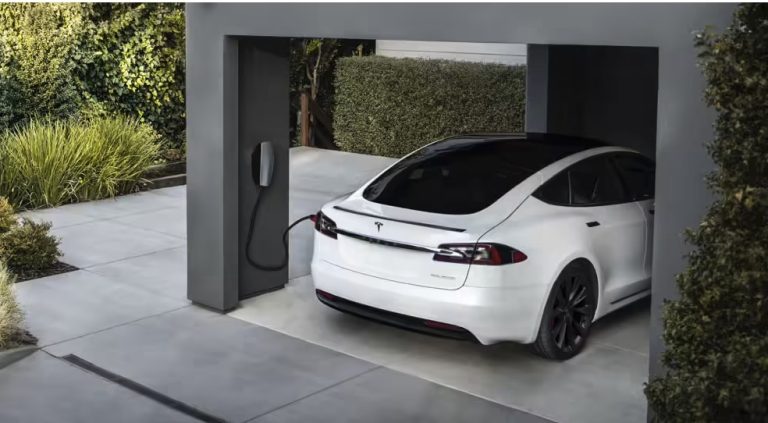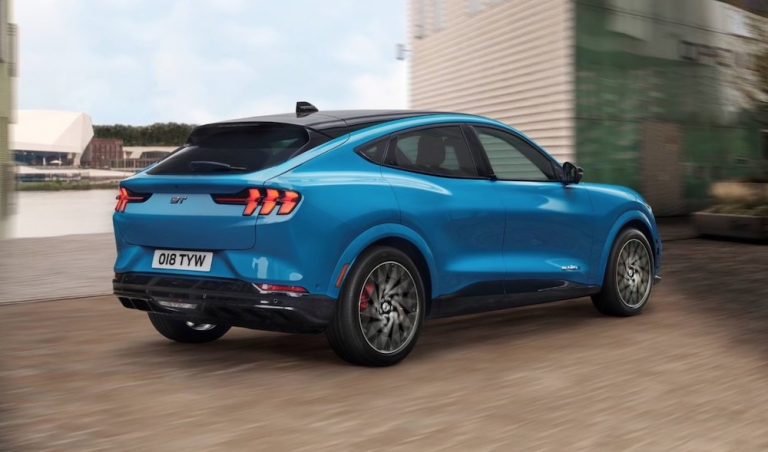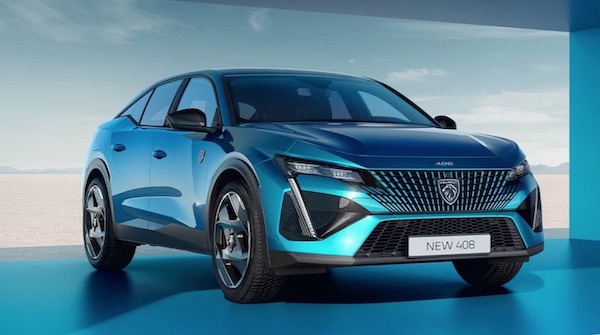Electric Cars: The Basics
For those of you new to zero-emission electric driving, we recommend a read of the following articles:
Sign up to the e-zoomed Electric Living newsletter
The All-Electric GWM Ora Funky Cat Hatchback
GWM Ora, though, not a brand we immediately recognise in Ireland, is owned by the Chinese automobile manufacturer, Great Wall Motor Co., Ltd. GWM is the eight largest automobile manufacturer in China and was founded in 1984. Yes, the company is named after the Great Wall of China and is headquartered in Hebei, China.
The Ora brand was announced by GWM in May 2018. According to the manufacturer, Ora stands for ‘open, reliable and alternative’. The brand is dedicated 100% to electric vehicles (EVs). The brand’s entry into the European market has been very recent: 2022. The company currently sells the following electric vehicles (EVs):
- The all-electric Ora Funky Cat
Though the pure electric Funky Cat is new to our market, its exterior design has a sense of familiarity. A blend of styling from other family cars familiar to us: the all-electric Mini, the Porsche 911, VW Beetle and more! For some reason, it works and results in a rather attractive (cute) family compact electric hatchback. However, we are not as convinced with the name, which has its genesis in the GWM China portfolio, further tweaked for the European markets.
The Funky Cat is available in two battery sizes (48 kWh/ 63 kWh), which is an excellent approach, as it gives consumers more choice. The manufacturer claims an electric range of up to 310 km for the entry-level 48 kWh variant and an e-range up to 420 km for the 63 kWh EV battery option. Certainly more than adequate zero-emission electric range for daily commuting and motorway driving.
Even adjusted for real-world driving conditions the electric hatchback will deliver decent range. For the 48 kWh EV battery, expect a real-world range closer to 260 km and for the 63 kWh EV battery, a 350 km e-range is more realistic. In comparison, the Corsa-e has 362 km claimed range, the Honda e 222 km and the Mini Electric, 270 km.
The five-door five-seat e-hatchback is not as compact as it looks. In fact, in terms of size it is closer to the all-electric VW ID.3 (length: 4261 mm) and the all-electric Cupra Born (length: 4322 mm). But despite this, the Funky Cat (4235 mm) offers a much smaller boot (228 L), compared to the ID.3 (385 L) and Born (385 L). Moreover, the Funky Cat boot does have a high lip. The Ora does not have a frunk. The EV cable can be stored below the boot.
In terms of performance, the front-wheel drive (FWD) GWM Ora electric is not as nippy as the all-electric Abarth 500e (0-100 km/h: 7.0 seconds), but the Ora does deliver a decent performance. The electric vehicle (EV) can achieve 0-100 km/h in 8.3 seconds (maximum power: 171 PS/ torque 250 Nm). The top speed is 160 km/h. The EV has regenerative braking and offers one-pedal driving.
Though the Ora electric family car only offers DC charging up to 64 kW DC, given the size of the onboard EV battery and the fact that most charging is done at home, the 64 kW DC charging speed is just fine. According to GWM, the EV battery can be charged 15%-80%: 42 minutes. For home charging, using a dedicated residential single-phase EV charger, the EV can be fully charged in 5 hours and 24 minutes.
Interestingly, the EV incorporates a 3-phase AC onboard charger as standard. For those with access to three-phase (11 kW) charging, the electric car can be fully charged in 3 hours and 12 minutes. In general, we at e-zoomed recommend a topping up approach to charging an EV. This way, charging times are shorter and it is also better for the long-term maintenance of the EV battery. GWM offers a 8 years or 160,000 km EV battery warranty. This has now become the de facto standard for electric cars!
The GWM Ora has already achieved a 5 Star NCAP Safety Rating. The EV offers a host of safety features, to include: auto emergency braking, pedestrian & cyclist detection, blindspot detection, lane keep assist, lane centring function, ADAS safety package, reversing camera, 360 degree surround cameras, rear traffic cross alert & brake and more!
Other technology onboard includes: a 10.25″ infotainment display, 10.25″ instrument cluster, wireless charging and voice assistant. Interestingly, the e-hatchback also offers a facial recognition system, which recognises the driver and automatically adjusts the settings to the drivers preference.
The Funky Cat is not the first EV to incorporate this technology and we can expect it to become commonplace in due course. Surprisingly, it does not offer Apple Car Play or Android Auto (will be installed via over-the-air updates in due course).
Despite the compact size, the EV has ample headroom and legroom, but a tight squeeze for three adults at the back. Also limited is the rear-view visibility and there is no windscreen wiper. The interior quality is to a good standard and finish. It is available in a dual-tone colour scheme. However, the EV does not have heated seats, usually a must for markets like Europe.
We will need to wait to assess if European consumers believe the proposition of the EV reflects the premium price tag, given the very limited brand awareness. But we do believe that Chinese automotive manufacturers like GWM, are well positioned for long-term success in Europe.
Bottom-line, electric driving is good for the environment and the wallet!
| PROS | CONS |
|---|---|
| Decent all-electric range. 11 kW AC onboard charger as standard | Limited brand awareness |
| Appealing exterior styling | Cheaper alternatives available |
| Good level of safety and technology | Small boot |
The All-Electric GWM Ora Funky Cat Hatchback (credit: GWM Ora)
| At A Glance | |
|---|---|
| EV Type: | Battery-Electric Vehicle (BEV) |
| Body Type: | Hatchback |
| Engine: | Electric |
| Available In Ireland: | Yes |
| Variants (2 Options) |
|---|
| GWM Ora Funky Cat 300 PRO (from € 33,495) |
| GWM Ora Funky Cat 400 PRO + (from € 41,495) |
| EV Battery & Emissions | |
|---|---|
| EV Battery Type: | Lithium-ion |
| EV Battery Capacity: | Available in two battery sizes: 48 kWh/ 63 kWh |
| Charging: | 64 kW DC rapid charging (15%-80%: 42 mins). Onboard charger 11 kW AC (15%-80% : 3 hrs 12 mins) |
| Charge Port: | Type 2 |
| EV Cable Type: | Type 2 |
| Tailpipe Emissions: | 0g (CO2/km) |
| Battery Warranty: | 8 years or 160,000 km |
| Average Cost Of Residential Charging | |
|---|---|
| Battery net capacity: 16.7 kWh | € 4.00 |
| Battery net capacity: 30.0 kWh | € 7.19 |
| Battery net capacity: 39.2 kWh | € 9.39 |
| Battery net capacity: 45.0 kWh | € 10.78 |
| Battery net capacity: 50.0 kWh | € 11.98 |
| Battery net capacity: 64.0 kWh | € 15.34 |
| Battery net capacity: 71.0 kWh | € 17.01 |
| Battery net capacity: 77.0 kWh | € 18.45 |
| Battery net capacity: 90.0 kWh | € 21.57 |
| Battery net capacity: 100.0 kWh | € 23.97 |
- Note 1: The average cost of residential electricity in Ireland varies depending on the region, supplier and type of energy used. An average for Ireland is 23.97 cents/kWh.
- Note 2: Not all EV manufactures make available the data on net EV battery capacity, and in a number of instances the EV battery capacity advertised, does not state if it is gross or net capacity. In general, usable EV battery capacity is between 85% to 95% of the gross available capacity.
| Charging Times (Overview) | |
|---|---|
| Slow charging AC (3 kW – 3.6 kW): | 6 – 12 hours (dependent on size of EV battery & SOC) |
| Fast charging AC (7 kW – 22 kW): | 3 – 8 hours (dependent on size of EV battery & SoC) |
| Rapid charging AC (43 kW): | 0-80%: 20 mins to 60 mins (dependent on size of EV battery & SoC) |
| Rapid charging DC (50 kW+): | 0-80%: 20 mins to 60 mins (dependent on size of EV battery & SoC) |
| Ultra rapid charging DC (150 kW+): | 0-80% : 20 mins to 40 mins (dependent on size of EV battery & SoC) |
| Tesla Supercharger (120 kW – 250 kW): | 0-80%: up to 25 mins (dependent on size of EV battery & SoC) |
- Note 1: SoC: state of charge
| Dimensions | |
|---|---|
| Height (mm): | 1603 |
| Width (mm): | 1825 |
| Length (mm): | 4235 |
| Wheelbase (mm): | 2650 |
| Turning Circle (m): | 11.2 |
| Boot Space (L): | 228 |
| Ora Funky Cat | |
|---|---|
| EV Battery Capacity: | 48 – 63 kWh |
| Pure Electric Range (WLTP): | 310 – 420 km |
| Electric Energy Consumption (kWh/100km): | 16.5 – 16.8 |
| Charging: | 64 kW DC rapid charging (15%-80%: 42 mins). Onboard charger 11 kW AC (15%-80% : 3 hrs 12 mins) |
| Top Speed: | 160 km/h |
| 0-100 km/h: | 8.2 – 8.3 seconds |
| Drive: | Front-wheel drive (FWD) |
| Max Power (PS): | 171 (126 kW) |
| Torque (Nm): | 250 |
| Transmission: | Automatic |
| Seats: | 5 |
| Doors: | 5 |
| Kerb Weight (kg): | 1,540 |
| Colours: | 6 |
| NCAP Safety Rating: | Five-Star |
Vehicle-to-Grid (V2G): An Introduction
V2G is an innovative bidirectional technology that allows the onboard EV battery to be charged and discharged i.e. electrical energy to be exported/ discharged from the onboard EV battery to the grid via a V2G compatible EV charger. It also allows for vital informational flow (data) to the grid. In effect, the V2G technology allows an EV battery to be used as a grid-connected energy storage unit.
| Benefits: V2G | |
|---|---|
| Lower energy costs: | V2G can lower utility costs to include, lowering wholesale and retail energy costs |
| Improving the grid’s response ability: | V2G can improve the stability of the intra-day supply and demand needs, improving the grids ability to meet the needs of peak demand |
| Improving power quality: | V2G can improve power quality by controlling voltage and power factors |
| Increase resilience: | V2G can improve the resilience of the grid and electricity network in significantly adverse conditions |
| Increase use of renewable energy: | V2G enables an increase in the contribution of renewable energy to the national energy generation mix. The higher the contribution of RE, the greener the power supplied |
| Reduce cost of EV ownership: | V2G can reduce the cost of EV ownership by enabling EV owners to earn from exporting energy to the grid |
| Improves national energy security: | V2G can improve the national energy security of a country by reducing dependence on imported energy |
| Improve environmental impact: | V2G can improve the environmental impact of energy usage and transportation by reducing the dependence on fossil fuels |
While e-zoomed uses reasonable efforts to provide accurate and up-to-date information, some of the information provided is gathered from third parties and has not been independently verified by e-zoomed. While the information from the third party sources is believed to be reliable, no warranty, express or implied, is made by e-zoomed regarding the accuracy, adequacy, completeness, legality, reliability or usefulness of any information. This disclaimer applies to both isolated and aggregate uses of this information.





























